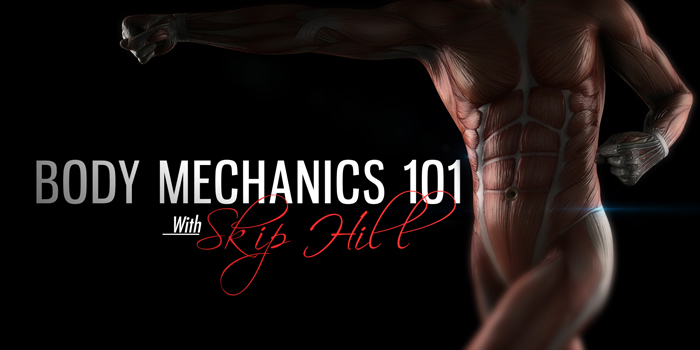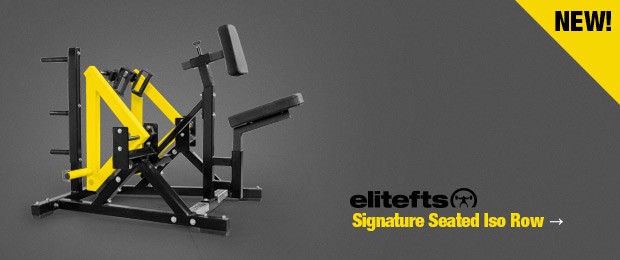
I had a woman approach me in the gym and ask me how she could get her rear delts to grow. I have this happen a lot, because they probably think I’m old and that, because I train with my wife, I won’t be thinking immature thoughts about them when they approach me, or that I won’t think they are hitting on me. She so wanted me, but that isn’t the point. I have been asked so many times lately about rear delts that I figured I would make this the topic for the second edition of Body Mechanics 101.
One of the muscle groups that stands out the most on a high-caliber physique—whether male or female—is rear delts. That might throw some of you because you probably thought I was going to say something like back or chest. You can have a big back or chest, or even big legs, without having a high-caliber physique (or the potential for one). But if you don’t have ridiculous rear delts, you will be sentenced with the rest of us to mediocredom or slightly-better-than-medicoredom. If you don’t know what mediocredom is, just know it is a long way from where we all want to be.
RECENT: Body Mechanics 101: Elbow Position for Triceps Extension
Most of your back training—specifically rowing—will hit your rear delts pretty hard. However, this is a muscle that adapts to heavy loads (insert Lois Griffin laugh here), and will eventually not respond without something above and beyond in the way of a new stimulus. Though bent-over dumbbell laterals have been a mainstay for decades to train the rear delts, unless you have retarded genetics, you aren’t going to get massive rear delts simply from doing bent-over laterals. Most of us need something just a little bit more aggressive and “out there."
The rear delts aren’t accustomed to being trained in the stretched position. If you pay close attention to a bent-over dumbbell lateral, the bottom position is the stretched position, yes, but there isn’t much resistance at this point of the movement. As the dumbbell is raised, the rear delt is engaged more, to the point that at the top of the movement, the rear delt is as engaged as it is going to get. Even in a rowing movement while training back, the arms are typically closer to the side of the body, and this also negates the stretch considerably, even at full extension during a row.
To get a muscle to grow, we need to provide a stimulus that it isn’t used to or hasn’t seen before. The best way to overload the rear delts is to use the stretched position with elbows away from the body, and not even bother with the top end of the rep that the rear delts are quite accustomed to. The exercise you want to use is the reverse chest fly machine or rear delt fly machine — whichever moniker you prefer. When doing this exercise, you are going to want to go heavier than usual because you won’t have to “finish” your reps. You will essentially be doing controlled, partial repetitions for the stretched or bottom third or half of the typical full range of motion.
Now, it is imperative that you pay close attention to your waginas, as they need to come as close together as the machine will allow. If you don’t know what a wagina is (or what a wenis is), check my article from December of 2015. Most people—whether doing chest flyes or rear delt flyes—will focus their attention on where their hands end up at the top of the movement. It is far more important to focus on the inside of the elbows because the hands can be touching, but if the elbows are a foot from each other, that is essentially lost range of motion that you are missing out on.
In the stretched position of the rear delt flyes, the arms should be almost entirely straight with only a slight bend. This will keep the elbows (inside of the elbows; the waginas) as close as possible, providing maximum stretch of the rear delts at the starting point of the repetition.
MORE: Bodybuilding Exercises for Powerlifters — Rear Delts Rows
Moving the weight in a controlled fashion, do partial repetitions in that third to half range of motion, and go to failure. Alter rep ranges from workout to workout to keep the muscle off-balance and not able to predict the stimulus. This is how you make a muscle respond and grow.
One more thing you can do to take your rear delt training to the next level is to superset this rear delt fly with a machine, barbell, or dumbbell row. With no rest after doing a set of rear delt flyes, immediately go into a set of rows. Yes, the muscles of the back will be doing a lot of work during the row, but this exercise will push the rear delts even further by first fatiguing the muscle with an isolation movement and then hammering it immediately afterward with a compound movement.
Good, well-developed rear delts are hard to come by, but when you get them, everyone will notice and not only will your shoulders and back appear wider and more detailed, but your waist from the back will also appear smaller. From the side, your delts will take up more space, providing more of a 3D look, making you look thicker from front to back.
Don’t show this article to your wives or girlfriends. I still need some action in the gym. Just Sayin'.











“Retarded” genetics? “Retarded”?
Our “wives or girlfriends”? Quite a few assumptions there, don’t you think?
I gather you’re trying to write with Personality Plus™. If so, it’s not turning out the way you expected.
I love the retarded genetics comment. I used to train with this Asian dude - he puts 250 on the calf machine and overnight he has +2 inches on his calves - that's retarded!
Thanks Skip - excellent and entertaining as always.